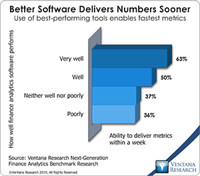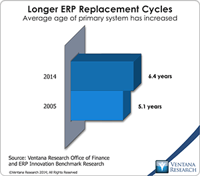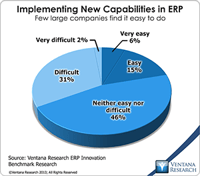Read More
Topics:
Microsoft,
Mobile,
SaaS,
Sales,
Sales Performance,
Salesforce.com,
Supply Chain Performance,
ERP,
HCM,
Human Capital,
Office of Finance,
Dynamics AX,
Dynamics GP,
Dynamics NAV Dynamics SL,
Kenandy,
PSA,
Sage Software,
Unit4,
Operational Performance,
Analytics,
Business Analytics,
Business Collaboration,
Business Performance,
Cloud Computing,
Collaboration,
Customer & Contact Center,
Financial Performance,
Workforce Performance,
CFO,
FinancialForce,
HR,
Infor,
Workday,
HANA,
Plex,
Professional Services Automation
Like most vendors of on-premises ERP and financial management software, in moving to the cloud Oracle has focused on developing for existing and potential customers the option of multitenant software as a service (SaaS). (I’m using the term “ERP” in its most expansive sense, to include such systems employed by all types of companies for accounting and financial management rather than only systems that are used by manufacturing and distribution companies.) Oracle’s ERP Cloud Service includes ...
Read More
Topics:
Microsoft,
Mobile,
SaaS,
Sales,
Salesforce.com,
ERP,
HCM,
Human Capital,
Office of Finance,
Dynamics AX,
Dynamics GP,
Dynamics NAV Dynamics SL,
Kenandy,
PSA,
Sage Software,
Unit4,
Operational Performance,
Analytics,
Business Performance,
Cloud Computing,
Collaboration,
Customer & Contact Center,
Financial Performance,
CFO,
FinancialForce,
HR,
Infor,
Workday,
HANA,
Plex,
Professional Services Automation
The keynote theme at this year’s Sapphire conference in Orlando was Simple. Top executives from SAP, a software company associated with complexity, stated and restated that its future direction is to simplify all aspects of its products and the ways customers interact with them and the company itself. SAP’s longstanding and commendable aspiration to thoroughness in its software will be giving way to an emphasis on elegance in its engineering. This objective is more than admirable – SAP’s future...
Read More
Topics:
Microsoft,
Mobile,
SaaS,
Sales,
Salesforce.com,
Supply Chain Performance,
ERP,
HCM,
Human Capital,
Office of Finance,
Dynamics AX,
Dynamics GP,
Dynamics NAV Dynamics SL,
Kenandy,
PSA,
Sage Software,
Unit4,
Operational Performance,
Analytics,
Business Collaboration,
Business Performance,
Cloud Computing,
Collaboration,
Financial Performance,
CFO,
FinancialForce,
HR,
Infor,
Workday,
HANA,
Plex,
Professional Services Automation












